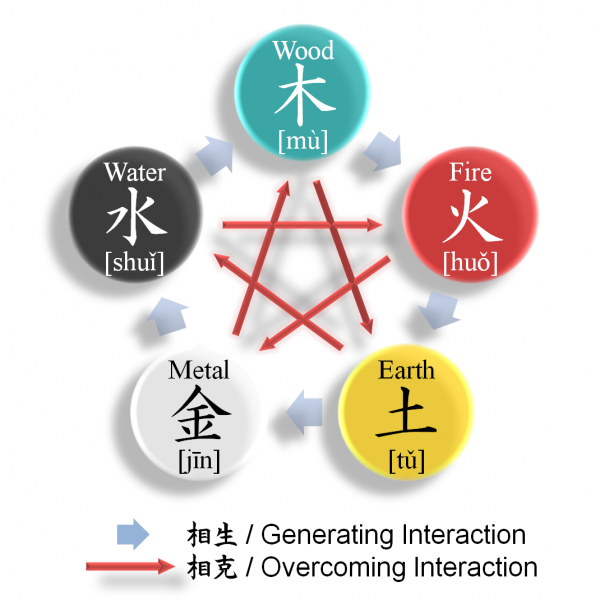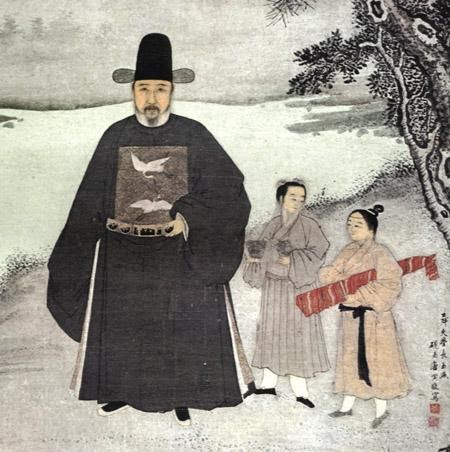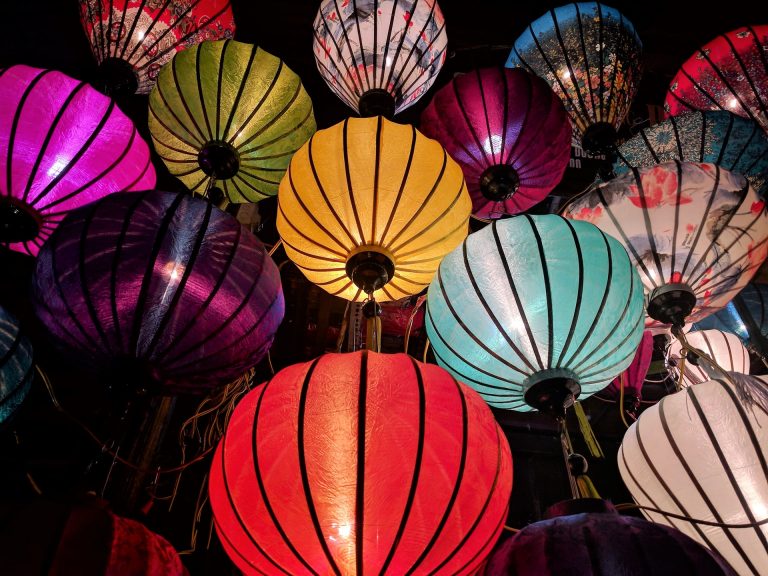Ancient Chinese artifacts such as clothing, painting, and jewels feature rich colors. Traditional Chinese believe that everything in the universe is made up of the five basic elements of “metal, wood, water, fire and earth.” The five elements are omnipresent, mutually reinforcing, cyclical and endless, constituting a prosperous world. Each of these elements is connected with a specific color. These are the five primary colors of Chinese culture. When in harmony with each other, they can produce many exquisite colors.
Cyan, red, white, black, and yellow are the traditional primary colors in China. In ancient times, they were deemed noble and honored and were favored over the secondary and tertiary colors. In traditional clothing especially, the colors were an important indicator of one’s identity and social status. The five traditional colors are like a language, expressing the way ancient Chinese viewed the world.
Contrary to the modern perception, achieved through the Chinese Communist Party’s (CCP’s) excessive use of the color red in their nationalist propaganda, red is not the only orthodox color in China. Here we can see how other colors were valued in the past.

Cyan
Of the five elements, Cyan corresponds to wood, symbolizing the color of plants as they germinate and grow. A popular Chinese saying goes, “Cyan, derives from blue but is stronger than blue.” Cyan carries profound meaning in ancient Chinese society, signifying strength, hope, simplicity, and solemnity. When in harmony, it lends a decisive nature, but anger and frustration result from imbalance.
Cyan is often seen in traditional artifacts and clothing. As the color of nature, it is commonly used in watercolor landscapes and beautiful porcelain.
Red
Success
You are now signed up for our newsletter
Success
Check your email to complete sign up
The color red corresponds to the element of fire, pure and unadulterated. Evoking joy, it is considered to be the color of the sun, bright and hot. It signifies things that are great and related to fire, like the human heart, accompanied by the sensitivity of character.
During the Zhou dynasty, the emperors, considered Sons of Heaven, were dressed in pure red, indicating the highest rank, while the lords wore yellowish red.
In recent times, red has become a symbol of the CCP with its blood-red flag, but that is far from the traditional meaning of the color.
Yellow
Yellow corresponds to the earth element; open, rich, and glorious. It symbolizes dignity and wealth. The stomach and spleen, associated with empathy and acting on ideas are all in the yellow domain. The chief emotion is worry.
As the theory of the Five Elements and the principles of Yin and Yang follow the virtue of the Earth, the color yellow was always revered. It was even worthy of one of China’s Three Sovereigns, Huangdi, or the Yellow Emperor.
The Tang dynasty designated yellow as the imperial color. Red and yellow came to be the colors reserved for the emperor’s clothing.
White
White corresponds with the metal element. The character for white was originally formed by adding the word “enter” to the word “two.” In ancient times, the character ” 二 (two)” symbolized the space between heaven and earth, and “入 (enter)” stems from sunlight entering between heaven and earth. By combining the two, “白(white)” is an image of sunlight falling between heaven and earth.
While the concept seems simple, it is actually very broad. One has to stand at a great height and look down on the earth from a macroscopic point of view to grasp the character “白.” Hosting the emotion of sadness, the connotation behind it is deep and wide.
The Shang Dynasty revered white, using it for major events and in military affairs. White turtle shells were used for divination.
Black
Black corresponds to the water element and the emotion of fear. Observing that black charcoal was formed after a fire burned, the ancient Chinese created the character 黑 (black) by combining the radicals 灬 (fire) and 土 (Earth).
In the Qin Dynasty, black became the main color of clothing. The emperor was often dressed in a black upper garment with a crimson lower garment.

Balancing the elements
While each of the five elements corresponds to basic color, each pair is also linked with a main organ of the human body. Thus, by observing subtle changes in skin color, or even color preferences, one can gain insight into the cause of health problems. Treating them all boils down to balance.
Traditional medicine calls for finding the root cause of illness and addressing that, rather than simply treating the symptoms. If the issue is found to be an excess of one element, its controlling element is applied. Likewise, when one element is found to be weak, it can be strengthened by its supporting element.
For instance, say you like the color green, and you surround yourself with it. This color corresponds to the Wood element, and the main organ it affects is the liver. Delve a little deeper and we find that the corresponding character trait is planning, and taking charge. Perhaps you have a controlling nature. To keep this in balance, and thereby harmonize the body, you could introduce more of the Metal element (white) into your life.
While the details and intricacy of the theory of Five Elements seem very complicated, the essence is simple. Everything is tied together and a single element being off-balance will affect the whole. To maintain a healthy mind and body, we must strive for harmony in all aspects of our lives. A nutritious diet, a healthy lifestyle, and a colorful environment will all help to achieve this goal.
Ila Bonczek contributed to this report.













